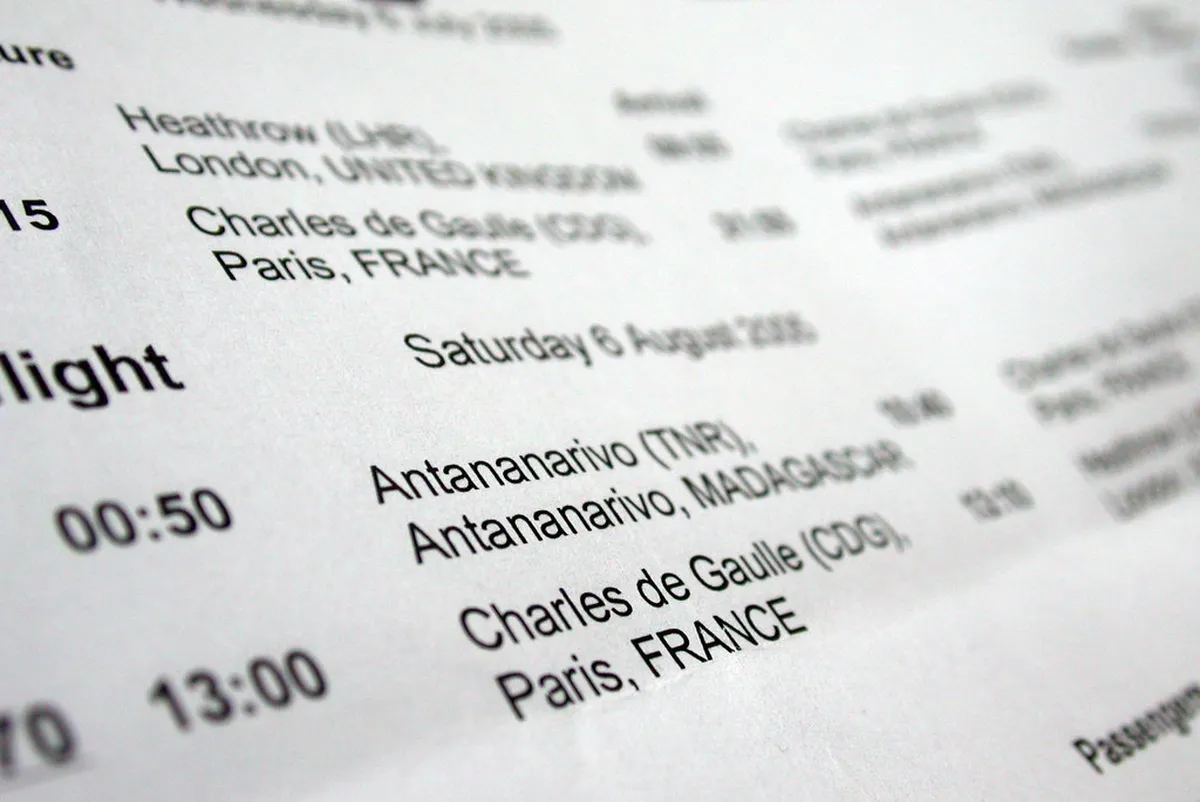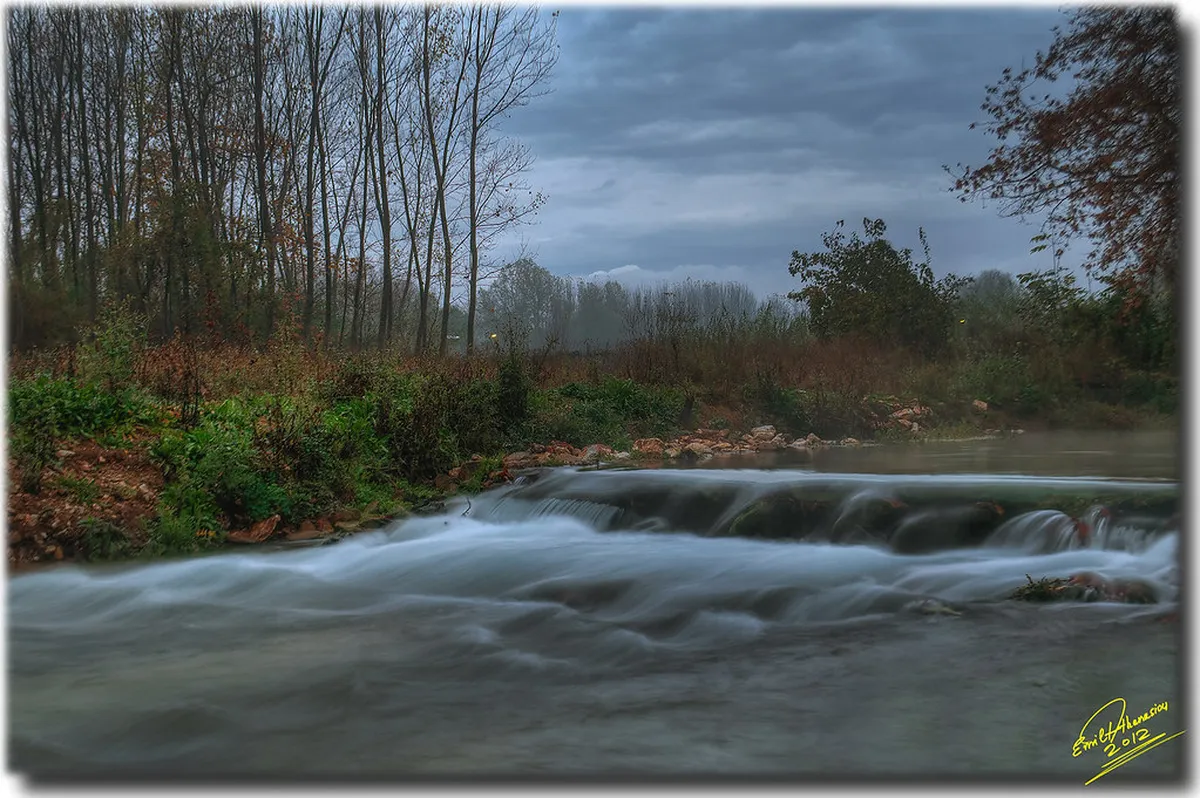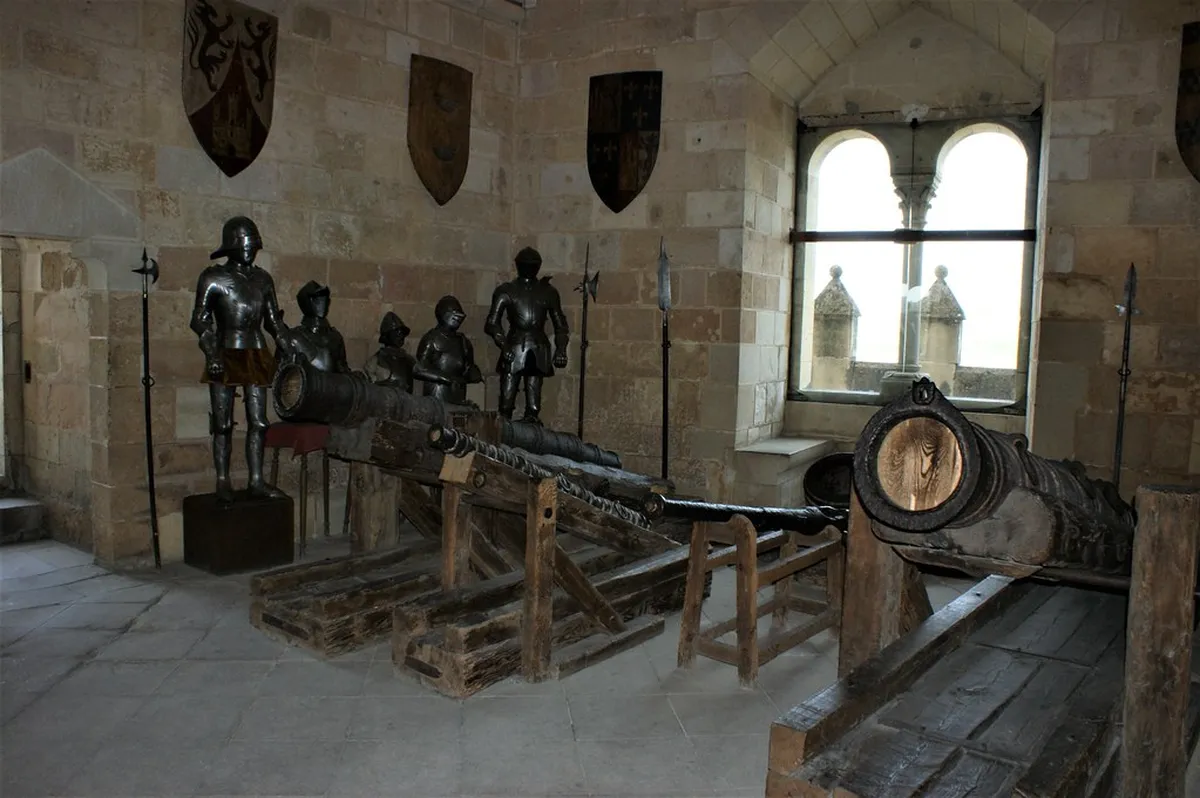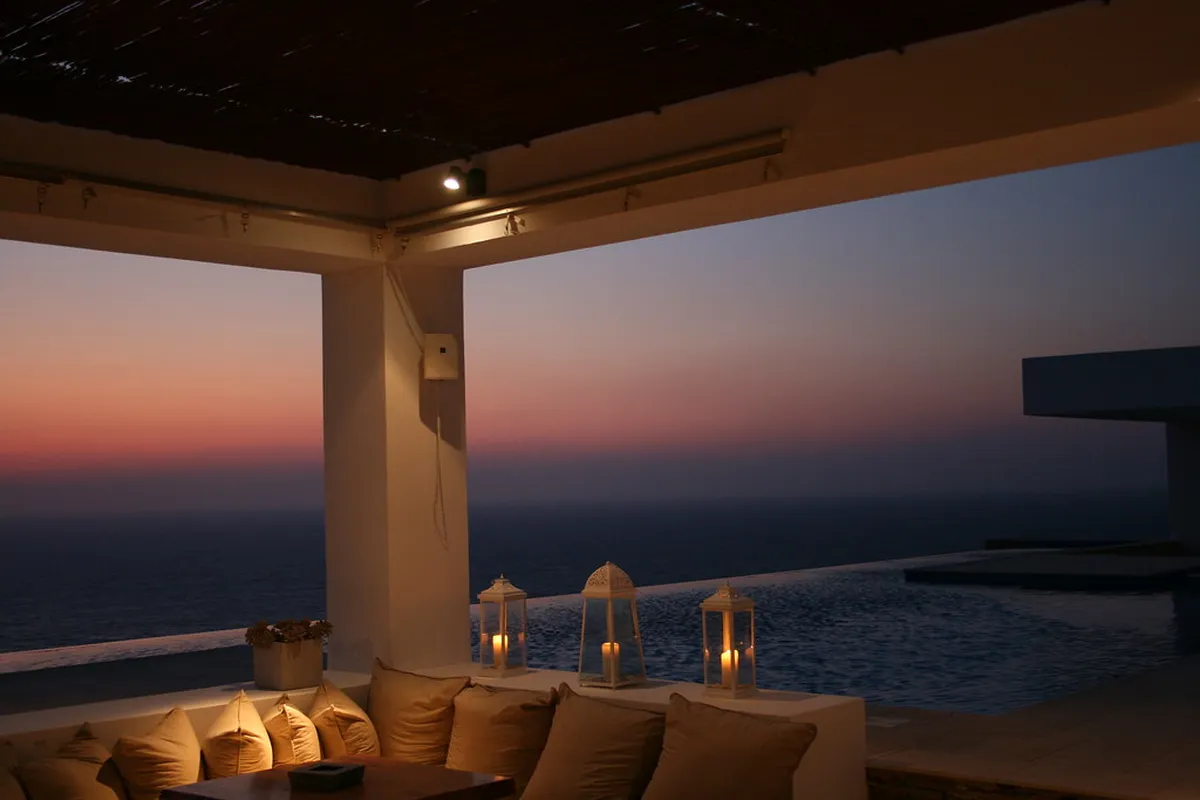Crafting Your Perfect Oslo Itinerary: A First-Timer's Guide
Oslo, Norway's vibrant capital, offers a captivating blend of nature and city life. First-time visitors often wonder how to best experience its unique charm. This comprehensive guide helps you craft an unforgettable Oslo itinerary for first-timers. We will cover everything from arrival to departure in 2025.
Discover top attractions, cultural insights, and practical travel tips. Our aim is to ensure your initial visit is smooth and enjoyable. You will learn about efficient public transport and delicious dining options. Get ready to explore this beautiful Scandinavian city with confidence. This guide serves as your essential companion for planning an optimal Oslo adventure.
Oslo boasts stunning fjords, world-class museums, and modern architecture. Understanding seasonal variations is key to maximizing your trip. We will provide detailed advice for every aspect of your journey. Prepare to immerse yourself in Norway's rich history and contemporary culture. Explore our complete travel resources for more planning tools.
Planning Your Oslo Itinerary: Best Time to Visit in 2025
Plan this trip faster with our free online itinerary maker. Get a personalized day-by-day plan in minutes.
Selecting the ideal time significantly enhances your Oslo experience. Each season offers distinct activities and charm. Understanding weather patterns helps you pack wisely. Your budget also varies depending on the time of year.
Spring, from April to May, brings blossoming flowers and milder weather. Temperatures average 10-15°C (50-59°F). Crowds are smaller than summer, allowing easier access to attractions. This period is perfect for leisurely walks and outdoor cafes. Rain showers are common, so a waterproof jacket is recommended. Check our best time to visit Oslo guide for more details.
Summer, June through August, offers long daylight hours and warmer temperatures. Averages range from 20-25°C (68-77°F). This is peak tourist season, meaning higher prices and larger crowds. Many outdoor festivals and events take place. Booking accommodations and popular tours well in advance is essential. The Oslo Fjord is particularly inviting during these months.
Autumn, September to October, showcases beautiful fall foliage. Temperatures are cooler, around 5-12°C (41-54°F). Tourist numbers decrease significantly after August. This makes autumn an excellent time for a more peaceful visit. You can often find better deals on flights and hotels. Layers are crucial for comfort during this season.
Winter, November to March, transforms Oslo into a snowy wonderland. Temperatures often drop below freezing. Average highs are 0°C (32°F) or colder. This season is ideal for winter sports like skiing and ice skating. Embrace the cozy 'hygge' culture with warm drinks and indoor activities. Be prepared for short daylight hours and cold conditions. Ensure your Oslo budget travel tips account for heating.
Seasonal Activities and What to Expect
Summer provides opportunities for fjord cruises and island hopping. The parks are green and perfect for picnics. Winter offers cross-country skiing at Holmenkollen and cozy museum visits. Spring and autumn are excellent for exploring city neighborhoods on foot. Always verify opening hours, as some attractions have seasonal schedules. Planning for 2025 involves checking specific event calendars.
Accommodation prices fluctuate greatly throughout the year. Peak summer rates can be 50% higher than shoulder season. Dining experiences are generally consistent but popular spots require reservations in summer. Consider purchasing the Oslo Pass for significant savings. It covers transport and museum entry year-round. This is especially useful during your Oslo itinerary.
Essential Pre-Trip Planning for Your First Oslo Trip in 2025
Careful planning ensures a smooth and enjoyable first visit to Oslo. Start by checking Norway's entry requirements. Most European and many other citizens do not need a visa for short stays. Always verify specific regulations based on your nationality.
Norway uses the Norwegian Krone (NOK). Credit and debit cards are widely accepted everywhere. It is rare to need cash, even for small purchases. Inform your bank of your travel dates to avoid card issues. ATM withdrawals are available if you prefer some local currency on hand.
Travel insurance is non-negotiable for international travel. It covers unforeseen events like medical emergencies or trip cancellations. Standard policies often include lost luggage or travel delays. Compare different providers to find comprehensive coverage. Do not underestimate its importance for peace of mind in 2025.
Booking your flights and accommodation well in advance saves money. Especially during peak seasons, prices can skyrocket. Consider flying into Oslo Airport Gardermoen (OSL). This is the main international airport serving the capital. Early booking also ensures better selection. Review our guide on where to stay in Oslo for first-timers for neighborhood recommendations.
Accommodation Choices and Considerations
Oslo offers diverse accommodation options. These range from luxury hotels to budget-friendly hostels. Consider staying near public transport hubs for convenience. Central areas like Sentrum or Frogner are popular. They provide easy access to many attractions. Read reviews and look for deals when booking.
Getting from Oslo Airport to the city center is straightforward. The Airport Express Train (Flytoget) is the fastest option. It reaches the city in about 20 minutes. Regional trains are a more budget-friendly alternative. They take slightly longer but cost less. Buses also provide direct routes to various parts of the city. Consult our Oslo airport transfer guide for detailed instructions. Taxis are available but are the most expensive option.
Pack appropriate clothing for the season of your visit. Layers are always a good idea, regardless of the time of year. Comfortable walking shoes are essential for exploring the city. Adapters for European two-pin plugs are needed for electronics. A reusable water bottle helps you stay hydrated and save money. Oslo's tap water is safe and delicious to drink.
Getting Around Oslo: Your First-Timer's Transport Guide
Navigating Oslo is surprisingly easy, even for first-time visitors. The city boasts an excellent public transportation network. This system includes metros, trams, buses, and local ferries. Relying on public transit is efficient and cost-effective. It covers most major attractions and neighborhoods.
The Oslo Pass is an invaluable tool for sightseeing. It provides unlimited travel on Ruter's public transport within zones 1 and 2. This covers the entire city center. The pass also grants free entry to over 30 museums and attractions. You can purchase it for 24, 48, or 72 hours. Consider its value based on your planned activities. Learn more about the Oslo public transport card benefits.
Metro lines (T-bane) are perfect for longer distances. They connect the city center with outer districts like Holmenkollen. Trams are ideal for shorter trips within the city. Buses cover routes not served by metro or tram. Ferries operate in the Oslo Fjord, connecting islands and coastal areas. This is especially fun in summer.
Walking, Cycling, and Accessibility
Oslo is a highly walkable city, especially the downtown area. Many key sights are within easy walking distance of each other. Comfortable shoes are a must for exploring on foot. Consider joining a walking tour for local insights. This allows for deeper cultural immersion. Explore our guide to getting around Oslo for route suggestions.
Cycling is another popular and eco-friendly way to see Oslo. The city offers numerous bike rental services. Dedicated bike lanes make cycling safe and pleasant. Many parks and waterfront areas are accessible by bike. This is a great option during warmer months. Remember to wear a helmet and follow traffic rules.
Oslo's public transport system is generally accessible for all travelers. Buses, trams, and metros often have ramps or level access. Most stations have elevators or escalators. Many popular attractions are also wheelchair accessible. Plan ahead by checking specific venue information. This ensures a comfortable experience for everyone in 2025.
Purchasing individual tickets is possible if the Oslo Pass isn't suitable. Single tickets can be bought via the Ruter app, at vending machines, or kiosks. Remember to validate your ticket when boarding. Fines for fare evasion are significant. A 24-hour public transport ticket costs approximately 121 NOK in 2025. This provides unlimited rides within Zone 1. It is a good option if you plan fewer museum visits.
Unmissable Oslo Attractions: A First-Timer's Sightseeing Plan
Oslo offers a rich tapestry of attractions catering to all interests. Prioritize these must-see sights for your first visit. Many are conveniently located within the city center. Efficient planning allows you to maximize your exploration time.
Start with the iconic Vigeland Sculpture Park. This stunning open-air museum features over 200 bronze and granite sculptures. Gustav Vigeland created these masterpieces, depicting the human condition. Entry is free, making it a great budget-friendly option. Allow at least 1-2 hours to wander through this artistic marvel.
Next, visit the architectural masterpiece of the Oslo Opera House. Its striking white marble roof slopes into the fjord. You can walk right onto the roof for panoramic city views. Free guided tours are often available, check schedules. It is a fantastic spot for photographs, day or night. The interior is also beautiful.
Historical Sites and Maritime Museums
Explore Akershus Fortress, a medieval castle and active military area. This historic site dates back to the 13th century. Wander its grounds and enjoy views of the harbor. Two museums are located within its walls. These offer insights into Norway's military history. Entry to the fortress grounds is free. It provides a fascinating glimpse into Oslo's past.
Head to the Bygdøy Peninsula for world-class maritime museums. The Fram Museum showcases the polar exploration ship 'Fram.' The Kon-Tiki Museum houses Thor Heyerdahl's famous raft. Though the Viking Ship Museum is currently closed, its collection will move to a new museum. Plan at least half a day for Bygdøy. A short bus ride or ferry trip from the city center reaches it.
The Munch Museum is dedicated to Edvard Munch, Norway's most famous artist. It houses a vast collection of his works, including 'The Scream.' Booking tickets online in advance is highly recommended. Timed entry ensures a smooth visit. This museum offers profound cultural insights. It is a vital stop for art enthusiasts in 2025.
For art lovers, the National Museum is also a must-see. It combines several former national museums under one roof. You can find everything from ancient artifacts to contemporary art. The museum is huge, so plan your visit around specific interests. Consider dedicating several hours to fully appreciate its collections. It often has temporary exhibitions worth exploring.
Family-friendly options include the Natural History Museum. It features dinosaur skeletons and botanical gardens. The Tusenfryd Amusement Park is also a popular choice. It is located just outside the city. The Norwegian Folk Museum on Bygdøy offers a glimpse into traditional Norwegian life. It has over 160 historic buildings. Children enjoy exploring the open-air exhibits. The museum often hosts traditional craft demonstrations.
Exploring Oslo's Culinary Scene: Where to Eat for Every Budget
Oslo's dining scene offers a delightful array of options. It caters to every taste and budget. From traditional Norwegian fare to international cuisine, choices abound. Eating out can be expensive, but savvy planning helps. Discover authentic flavors and local favorites.
Traditional Norwegian food often features fresh seafood and hearty meat dishes. Try 'fårikål,' a lamb and cabbage stew, in autumn. 'Kjøttkaker' (meatballs) with brown sauce is another classic. Fresh salmon and cod are staples on many menus. Look for local bakeries for traditional pastries like 'skillingsboller' (cinnamon buns). Consider joining an Oslo food tour for guided tastings.
For luxury dining, Oslo boasts several Michelin-starred restaurants. Maaemo offers an exceptional Nordic culinary journey. Kontrast and Statholdergaarden also provide exquisite experiences. These establishments require advance reservations. Expect to pay premium prices for such refined cuisine. This is a special treat for food enthusiasts.
Mid-Range and Budget-Friendly Options
Mid-range restaurants are plentiful throughout the city. Aker Brygge and Grünerløkka districts have many popular spots. Expect to pay around 250-400 NOK for a main course. Options range from Italian to Asian fusion. Many cafes offer delicious lunch specials at reasonable prices. Look for 'dagens lunsj' (lunch of the day).
Budget travelers have excellent choices too. Supermarkets like Kiwi, Rema 1000, and Coop are ideal for picnic supplies. Grab-and-go options include sandwiches and salads. Street food markets, especially during summer, offer diverse and affordable meals. Asian takeaways and falafel stands are also budget-friendly. Cooking your own meals in self-catering accommodation saves significant money.
Coffee culture is strong in Oslo. Numerous cozy cafes offer excellent brews and pastries. Tim Wendelboe is world-renowned for its specialty coffee. Enjoy a 'kanelbolle' (cinnamon bun) with your coffee. This is a perfect way to experience local daily life. Many cafes provide free Wi-Fi, too. It is a great spot to relax and recharge during your Oslo itinerary.
Oslo also has a thriving craft beer scene. Explore local breweries and pubs for unique Norwegian beers. Many establishments offer tastings. Remember that alcohol prices are high due to taxes. Consider buying alcohol at Vinmonopolet, the state-run liquor store, for better prices. This is the only place to buy strong beer, wine, and spirits. Enjoy a local beer, but be mindful of costs.
Day Trips from Oslo: Expanding Your First-Time Adventure
Beyond the city limits, Oslo offers fantastic day trip opportunities. These excursions provide diverse experiences. They showcase Norway's stunning natural beauty and charming towns. Expanding your journey beyond the capital is highly recommended. Plan at least one day trip if your itinerary allows.
A scenic Oslo Fjord cruise is a popular choice. Various boat tours depart from Aker Brygge. They navigate the narrow inlets and past picturesque islands. You can see charming cabins and lush forests. Some tours offer lunch onboard. This is an excellent way to appreciate the tranquil Norwegian landscape. Cruises range from 2 to 4 hours, depending on the route.
Visit Holmenkollen Ski Jump and Museum for breathtaking views. This iconic landmark sits atop a hill overlooking Oslo. Take the T-bane directly there. The museum details 4,000 years of skiing history. You can also try a zipline ride down the ski jump tower. It is an exhilarating experience for adventure seekers. The views of the city and fjord are truly spectacular.
Charming Towns and Historical Sites
Consider a trip to Drøbak, a picturesque coastal town. It is easily reachable by bus or ferry. Drøbak is famous for being Norway's official 'Christmas Town.' It has a year-round Christmas House and charming shops. Enjoy the seaside atmosphere and quaint architecture. This makes for a lovely, relaxed day out. The journey itself offers beautiful coastal scenery.
Another excellent option is exploring the town of Fredrikstad. This historic fortified city boasts Northern Europe's best-preserved Old Town. Wander through cobblestone streets and visit the fortress walls. The town also offers charming shops and cafes. It is accessible by train from Oslo. This trip provides a glimpse into Norway's military past. Read our best day trips from Oslo for more ideas.
For nature lovers, a visit to the idyllic islands in the Oslo Fjord is perfect. Hovedøya and Lindøya are just a short ferry ride away. Enjoy swimming, sunbathing, or simply relaxing in nature. These islands offer peaceful escapes from the city bustle. They are particularly popular during the summer months. Pack a picnic and enjoy the serene surroundings.
The Kon-Tiki Museum and Fram Museum on the Bygdøy Peninsula, while technically within Oslo, feel like a day trip. They are located together and deserve dedicated time. Explore famous polar exploration vessels and fascinating artifacts. These museums offer deep insights into Norway's adventurous spirit. A local bus or ferry makes getting there simple. This is an essential part of a comprehensive Oslo itinerary.
Cultural Immersion and Local Etiquette in Oslo for 2025
Understanding local customs enhances your Oslo experience. Norwegians are generally reserved but very friendly. Politeness and respect for personal space are highly valued. A few basic phrases can also go a long way. Embrace the 'lagom' lifestyle, meaning 'just enough' or 'in moderation.'
Tipping is not mandatory in Norway. Service charges are usually included in prices. You can round up your bill or leave a small tip (5-10%) for exceptional service. Do not feel obligated to tip if the service was standard. This differs from many other countries. Always check your bill, as sometimes an optional service charge might be added.
Punctuality is appreciated in social and business settings. If you are meeting someone, aim to be on time. Dress codes are generally casual, but smart casual is always appropriate. Norwegians value practical, comfortable clothing. This reflects their love for the outdoors. Even in fine dining, extreme formality is rare.
Safety, Solo Travel, and Language Basics
Oslo is a very safe city for tourists. Petty crime, like pickpocketing, can occur in crowded areas. Always be aware of your surroundings, especially on public transport. Keep valuables secure and out of sight. Emergency services are reliable and efficient. The emergency number for police is 112, fire 110, and ambulance 113.
Solo travelers will find Oslo particularly welcoming. The city is easy to navigate and offers many activities for individuals. Joining guided tours or group activities is a great way to meet people. Hostels also provide excellent opportunities for social interaction. Enjoy the freedom and safety of exploring Oslo on your own terms. Explore local customs and etiquette for deeper insights.
While most Norwegians speak excellent English, learning a few basic Norwegian phrases is appreciated. Try
Frequently Asked Questions
How many days are ideal for a first-time Oslo visit?
For a first-time Oslo visit, 3 to 4 full days are generally ideal. This timeframe allows you to cover the city's main attractions without feeling rushed. You can explore prominent museums, the Opera House, and Vigeland Park. This duration also provides time for leisurely walks and enjoying local cuisine. If you wish to include a day trip to the Oslo Fjord or a nearby town, consider extending your stay to 5 days. A longer visit gives you flexibility and deeper immersion. Plan your Oslo itinerary carefully to make the most of your time.
Is Oslo expensive for tourists, and how can I save money?
Yes, Oslo is generally considered an expensive city for tourists. Accommodation, dining, and alcohol are particularly costly. However, many strategies can help you save money. Consider purchasing the Oslo Pass for free public transport and museum entry. This offers significant savings if you plan extensive sightseeing. Look for self-catering accommodation and cook some meals yourself. Supermarkets are much cheaper than restaurants. Utilize the many free things to do in Oslo, like Vigeland Park. Walk or cycle when possible to save on transport fares. Traveling during the shoulder seasons (spring or autumn) can also reduce costs. Read our Oslo budget travel tips for more advice.
What is the best way to get from Oslo Airport Gardermoen (OSL) to the city center?
The most efficient way to get from Oslo Airport Gardermoen (OSL) to the city center is by train. The Airport Express Train (Flytoget) is the fastest, taking approximately 20 minutes to Oslo Central Station (Oslo S). It is comfortable but slightly more expensive. Alternatively, regional trains operated by Vy are a more budget-friendly option. They take about 23-25 minutes. Both services run frequently throughout the day. Buses are also available but generally take longer due to traffic. Taxis are the most expensive choice. For detailed instructions and pricing, consult our Oslo airport transfer guide. Plan your transfer in advance for a stress-free arrival in 2025.
Can I see the Northern Lights from Oslo during my first visit?
Seeing the Northern Lights from Oslo is highly unlikely and not recommended. While theoretically possible on rare, exceptionally clear nights with strong aurora activity, Oslo's light pollution and southern latitude make it a poor viewing location. For the best chances to witness the Aurora Borealis, you need to travel much further north. Destinations like Tromsø, Lofoten, or other parts of Northern Norway are ideal. These regions are well within the 'aurora oval.' Plan a separate trip to Northern Norway specifically for this experience. Your Oslo itinerary should focus on city attractions and cultural exploration.
What unique Norwegian dishes should I try in Oslo?
Oslo offers a chance to explore authentic Norwegian cuisine. For a hearty meal, try 'fårikål,' Norway's national dish, featuring lamb and cabbage stew. 'Kjøttkaker' (Norwegian meatballs) served with brown sauce and potatoes are a comforting classic. Seafood is a must, especially fresh salmon or cod prepared simply. Look for 'rekesmørbrød,' an open-faced shrimp sandwich. Don't forget to sample traditional pastries like 'skillingsboller' (cinnamon buns) or 'svele' (thick pancakes). Explore local food markets for artisanal cheeses and cured meats. A food tour in Oslo can introduce you to many local specialties. Enjoy the unique flavors of Norway.
Is the Oslo Pass worth it for a first-time visitor in 2025?
The Oslo Pass is often excellent value for first-time visitors in 2025. It offers unlimited travel on public transport within zones 1 and 2. More importantly, it provides free entry to over 30 museums and attractions. If you plan to visit multiple museums and use public transport frequently, it can save you significant money. Calculate the cost of individual tickets versus the pass price for your planned activities. The pass is available for 24, 48, or 72 hours. For example, if you visit 3-4 attractions and use transit extensively over two days, the 48-hour pass will likely pay for itself. Our Oslo public transport card guide offers a detailed breakdown. It makes navigating your Oslo itinerary very convenient.
Oslo presents an unforgettable adventure for first-time visitors. From its striking architecture to serene fjords, the city captivates every traveler. Planning your journey with this guide ensures a seamless experience. Remember to embrace both the iconic sights and hidden gems. Your Oslo itinerary for first-timers should balance exploration with relaxation. Be sure to account for seasonal variations and local customs. This will enhance your overall immersion.
Utilize Oslo's efficient public transportation system and consider the Oslo Pass. This helps you maximize your sightseeing and save money. Don't shy away from exploring the culinary scene, from fine dining to budget-friendly eats. A day trip or two can also enrich your visit, revealing more of Norway's beauty. Always prioritize safety and respect local etiquette. These actions ensure a respectful and rewarding journey.
We encourage you to use this comprehensive guide as your starting point. It equips you with the knowledge for an incredible trip in 2025. Dive into Oslo's rich history, vibrant culture, and stunning natural landscapes. Begin crafting your personalized adventure today. For more detailed information, visit our travel blog. Start your unforgettable Norwegian capital exploration now!
Key Takeaways
- Allocate 3-4 days for a first-time visit to Oslo to cover major attractions without rush.
- Purchase the Oslo Pass for significant savings on public transport and museum entries if you plan extensive sightseeing.
- Explore diverse dining options by balancing restaurant meals with supermarket purchases to manage costs effectively.
- Utilize Oslo's excellent public transport system, including metro, tram, and bus, for efficient city navigation.
- Consider a scenic fjord cruise or a trip to Holmenkollen to experience Oslo's natural beauty and panoramic views.



